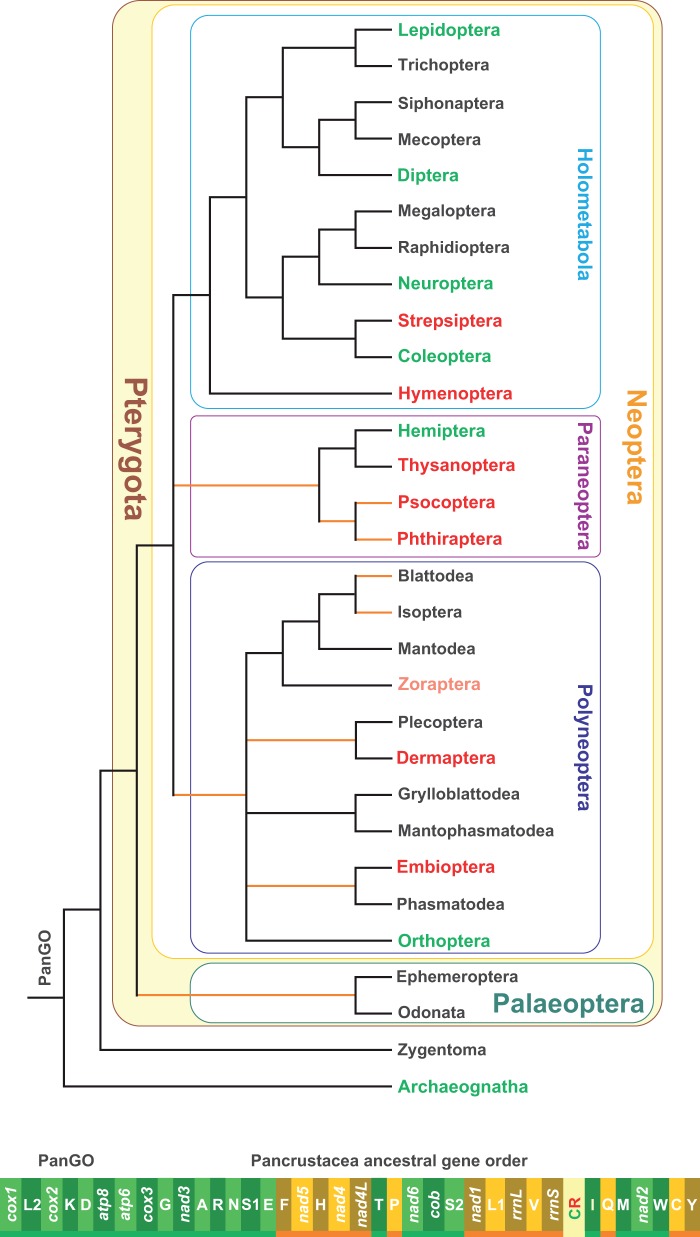Fig. 1.—
The PanGO and the distribution of GOs in the different orders of Insecta. The PanGO is linearized starting from cox1. The genes encoded on the α-strand (orientation from right to left in fig. 1) are represented in a light/deep green background, whereas those encoded on the β-strand (orientation from left to right in fig. 1) are depicted with a bright yellow/light brown background. The genes on the α-strand are underlined in green, whereas those on the β-strand are underlined in orange. Genes nomenclature: atp6 and atp8: ATP synthase subunits 6 and 8; cob: apocytochrome b; cox1-3: cytochrome c oxidase subunits 1–3; nad1-6 and nad4 L: NADH dehydrogenase subunits 1–6 and 4 L; rrnS and rrnL: small and large subunit ribosomal RNA (rRNA) genes; X: transfer RNA (tRNA) genes, where X is the one-letter abbreviation of the corresponding amino acid, in particular L1 (CTN codon family) L2 (TTR codon family), S1 (AGN codon family) S2 (TCN codon family). The consensus phylogenetic tree depicts the phylogenetic relationships among the 30 existing orders forming the class Insecta. The tree was based principally on the papers of Trautwein et al. (2012) and Peters et al. (2014). The orange branches denote uncertain relationships or possible nonmonophyly of terminal taxa. The orders with black names possess only the PanGO. The pink label for the order Zoraptera denotes that for this taxon, there are no complete mtDNA data currently available. The orders with a green label possess both PanGO as well as alternative GOs. The orders with red label have only GOs that are different from PanGO.

